There’s nothing that says summer quite like a pint full of fresh strawberries! Grow your own at home by following these simple strawberry-growing tips.

If you’re thinking about growing strawberries and looking for advice, you’ve come to the right place. Not only are strawberries incredibly easy to grow, but once you’ve had a little bit of practice, you’ll realize that these are fruits that can be cultivated just about anywhere, too.
Jump to:
- Here are the 27 best tips for growing strawberries.
- 1. Plant Early
- 2. Give Them Space…
- 3 ...and Lots of Sun
- 4. Consider a Raised Bed
- 5. Watch Your Drainage
- 6. Make Sure You Feed Them, Too
- 7. Remove the Runners Regularly
- 8. Plant Several Varieties
- 9. Plant Enough to Go Around
- 10. Prevent Verticillium Wilt with the Right Varieties
- 11. Consider Past Planting Habits
- 12. Amend Your Soil
- 13. Consider a Matted Row System
- 14. Bust Up Your Soil a Year in Advance
- 15. Improve Your pH
- 16. Don’t Stress if You Can’t Plant ASAP
- 17. Don’t Plant Too Shallow
- 18. Make Sure You Mulch
- 19. Protect Your Harvest From Hungry Birds
- 20. Preserve Your Extra Strawberries
- 21. Grow Strawberries Multiple Years in a Row
- 22. Try Planting in Hills
- 23. Watch Out for Slugs and Snails
- 24. Delay Your Gratification
- 25. Water Wisely
- 26 Limited Space? Plant Vertically in a Plastic Drum
- 27 Keep them Fresh for Longer
Here are the 27 best tips for growing strawberries.
1. Plant Early
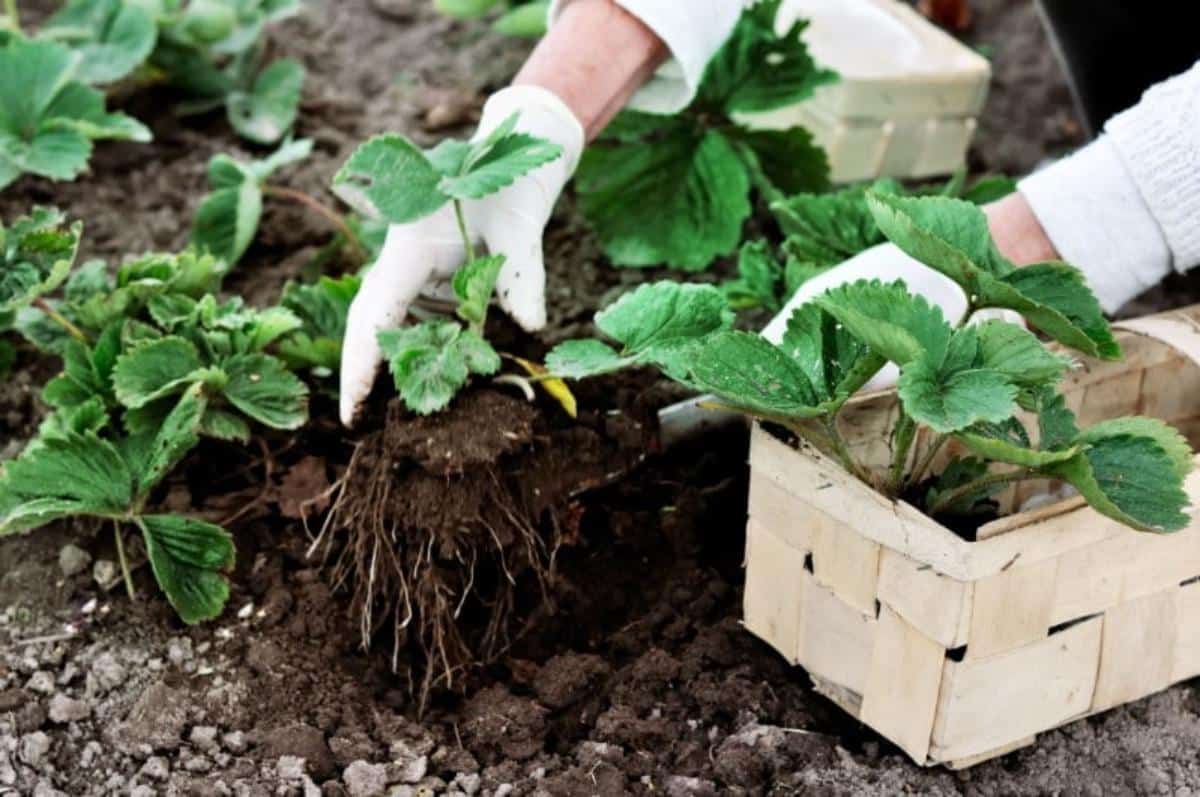
The earlier you can plant your strawberries, the better! That way, you’ll be able to enjoy fruit longer into the summer. This is especially true if you’re planting a type of strawberry besides a June-bearing plant.
2. Give Them Space…
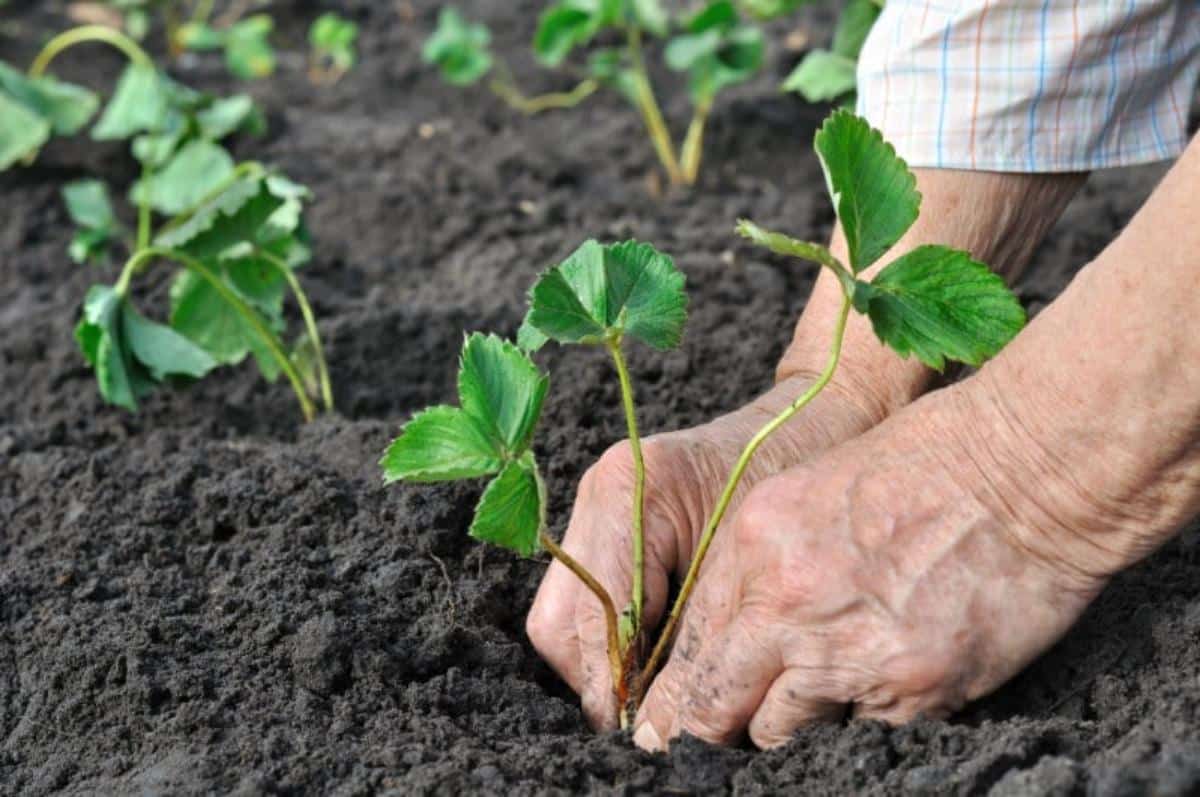
It can be tempting to try and cram as many strawberry plants into as tiny a spot as possible, but avoid this temptation! The more room you can give your strawberry plants to spread, the better. Give them at least 12 inches (30 centimeters) to grow in depth and 16 inches (40 centimeters) between your rows.
3 ...and Lots of Sun
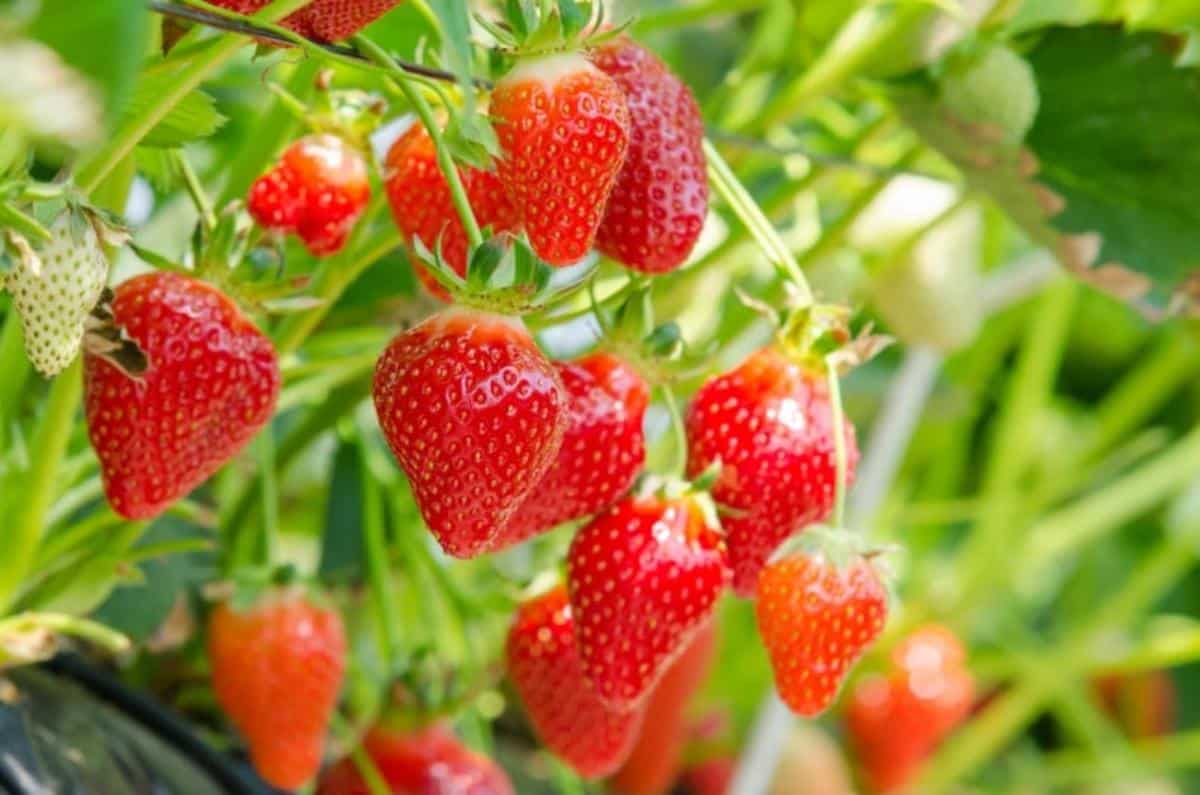
Strawberries love being grown in the sun! The exception is when you are planting the roots into the soil. Make sure to plant early in the morning or late in the day. Once their roots are established, they will love the sunlight!
4. Consider a Raised Bed
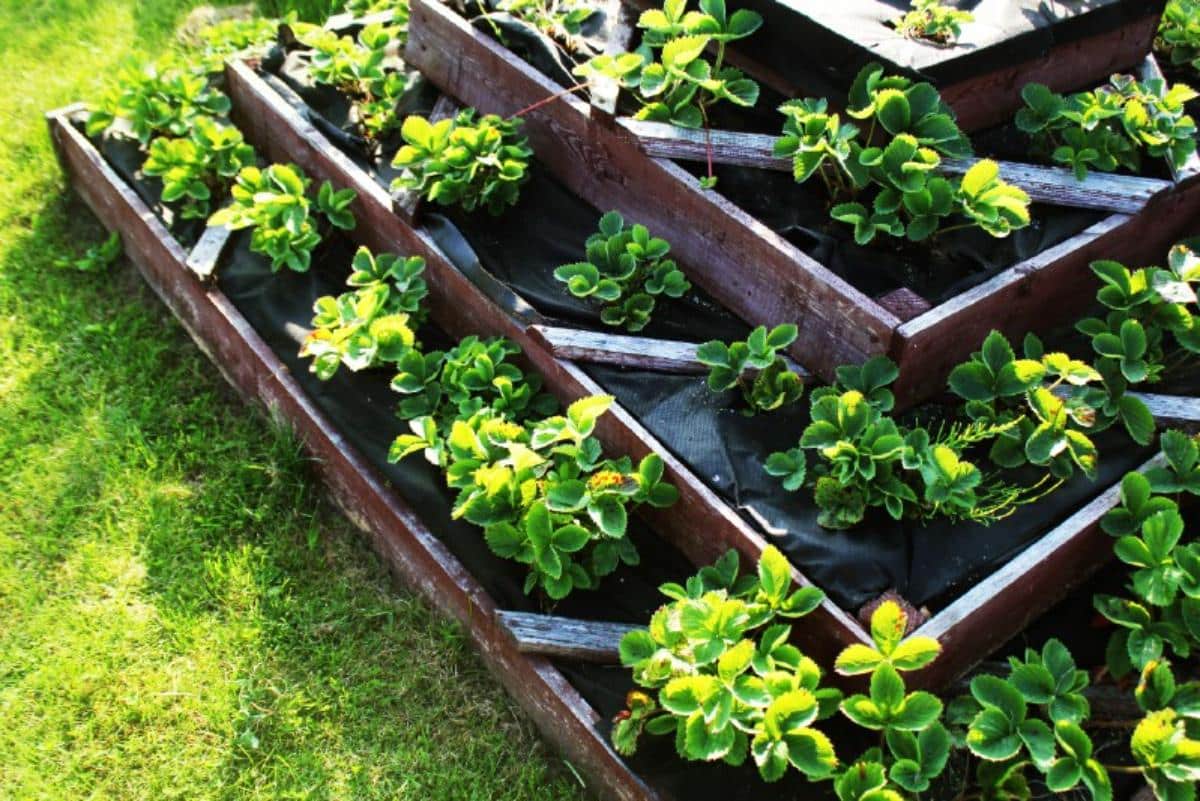
Growing in a raised bed is the perfect choice for gardeners with less-than-ideal soil, as well as those who want to make the most of limited space. One of the very best places you can grow strawberries is in raised beds. You'll have tons of control over the environment! You can also make the best-growing conditions by reducing weeds with a layer of straw in your beds. If you've never had raised beds, check out this tip for how you can easily create raised garden beds using cement blocks.
No matter where you intend to plant, take the time to prepare your beds first. You will want to choose a weed-free spot that is fertile and well-aerated. The best tip is to spread a two or three-inch layer of compost on the bed and to work it into the top layer of soil. Do this the year before you plant for the best results.
5. Watch Your Drainage
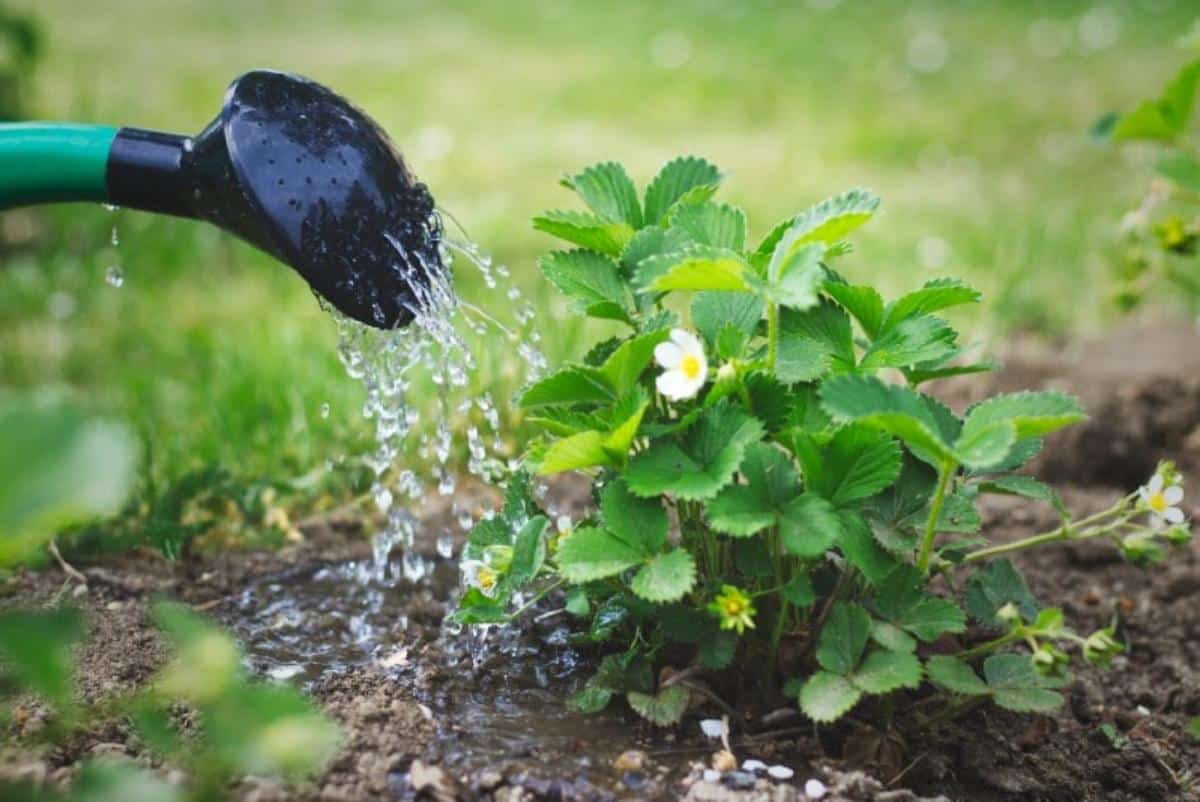
Strawberries like to be watered well, but they don’t want to be drowned! Prevent waterlogging by making sure the soil you grow your plants in is well-draining. You can plant your berries in mounds, which will prevent its soil from becoming too damp, or you can grow them in mulched beds for best results.
6. Make Sure You Feed Them, Too
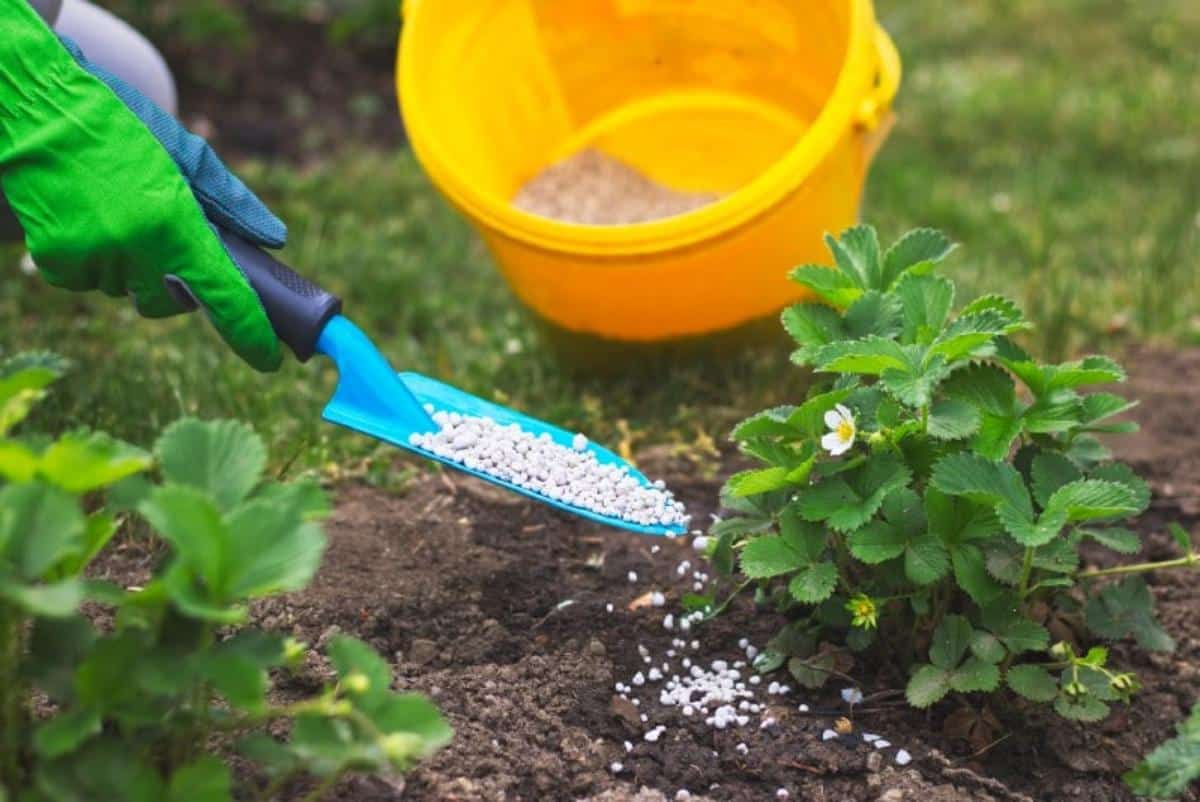
Fertilizing is essential if you want to grow healthy, productive strawberry plants. When you first see flowers appear, it’s time to fertilize. Use one that is high in potash for the best results.
7. Remove the Runners Regularly
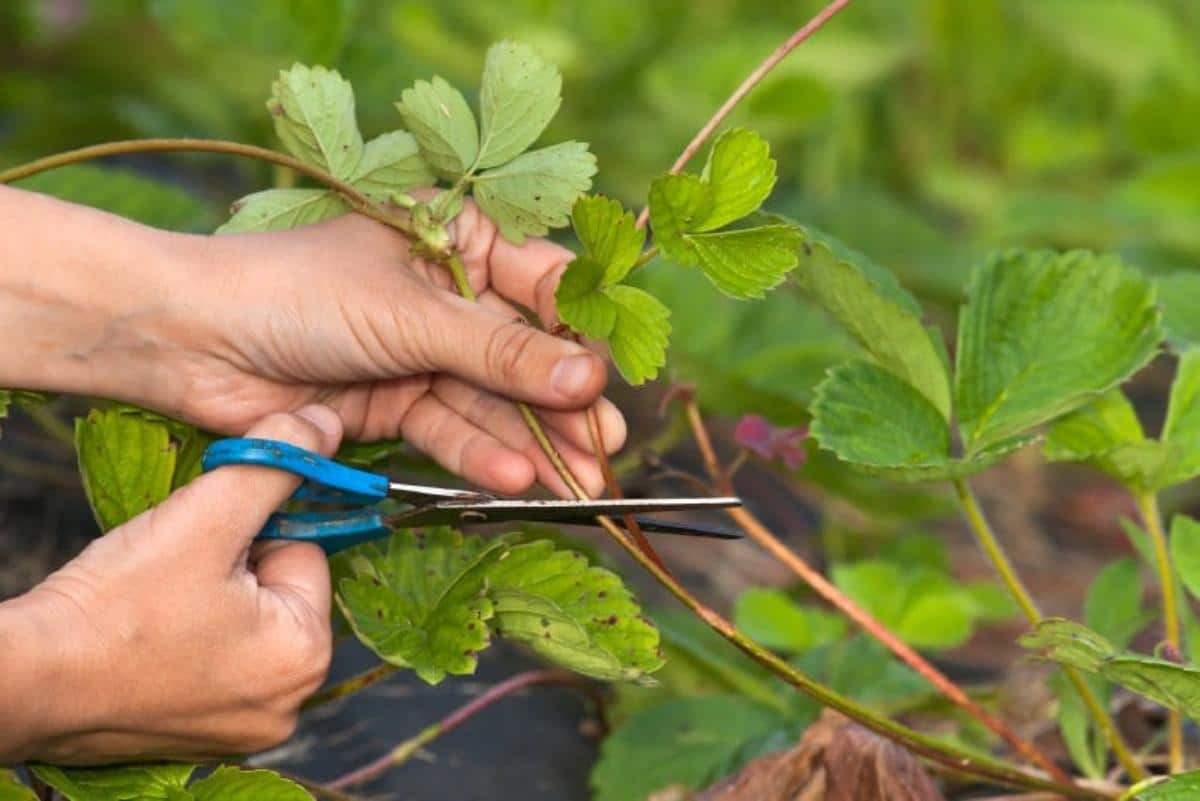
If you want to experience the best possible harvest, consider picking the early flowers that appear on your strawberry plants. This will help to promote regular growth. You can also get rid of runners. Strawberries spread via underground stolons, or runners, so removing and replanting these will control their spread and also give you more plants to relocate as you please!
Runners are usually produced over the summer months and can be uprooted and planted at any time. This will help your plant save energy, too.
8. Plant Several Varieties
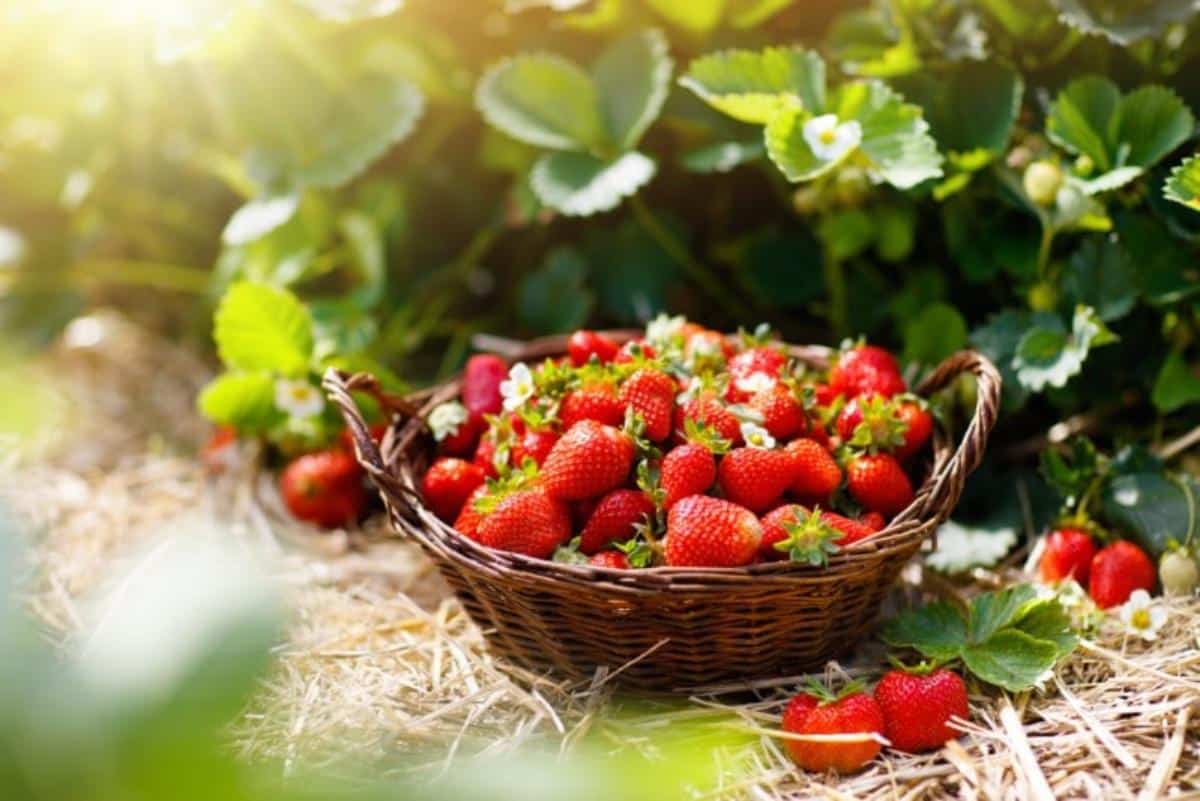
There are all kinds of varieties you can plant in your strawberry beds. Generally, you can lump strawberries into four categories - day-neutral, alpine, everbearing, and June-bearing. If you plan on preserving your strawberries, you will want to go for June-bearing plants, as they produce the biggest crop all at once.
However, if you’d rather enjoy fresh strawberries for a longer stretch, choose plants that are everbearing or day-neutral. Day-neutral berries produce a small crop during the entire season while everbearing produce up to three smaller harvests each season. Alpine strawberries are equally delicious but can be quite tiny.
9. Plant Enough to Go Around
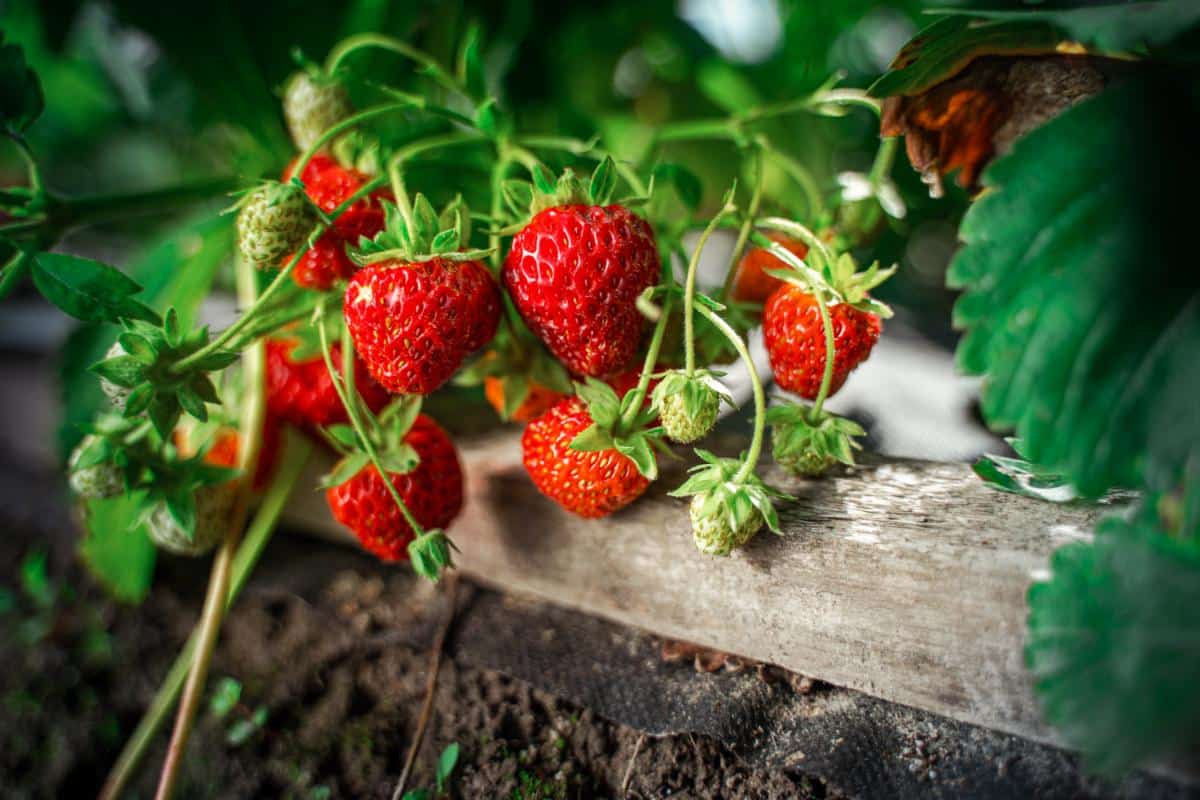
On average, you’ll need about five strawberry plants per person in your household. Usually, you’ll get anywhere between a cup and a pint of strawberries in each season. June bearers usually produce all of their fruit at once, while other types of strawberries will produce throughout the entire growing season.
10. Prevent Verticillium Wilt with the Right Varieties
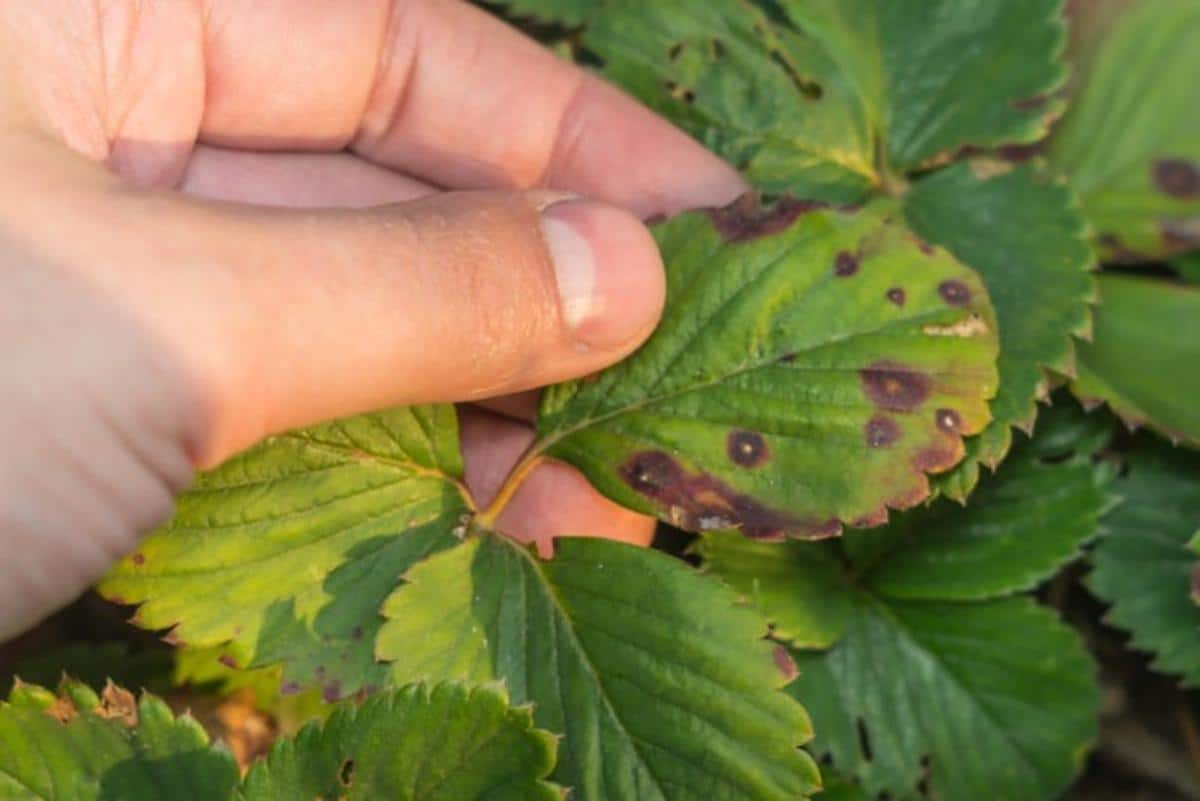
You can easily prevent the likelihood of various fungal diseases, including red stele, botrytis, and verticillium wilt, by planting varieties of strawberries that are resistant to these diseases. You’re not guaranteed to be totally immune from this disease, but your plants will have a better fighting chance right off the bat.
You can also prevent verticillium wilt by rotating your plants, particularly if there was a known fungal infection in a certain post the year before.
11. Consider Past Planting Habits
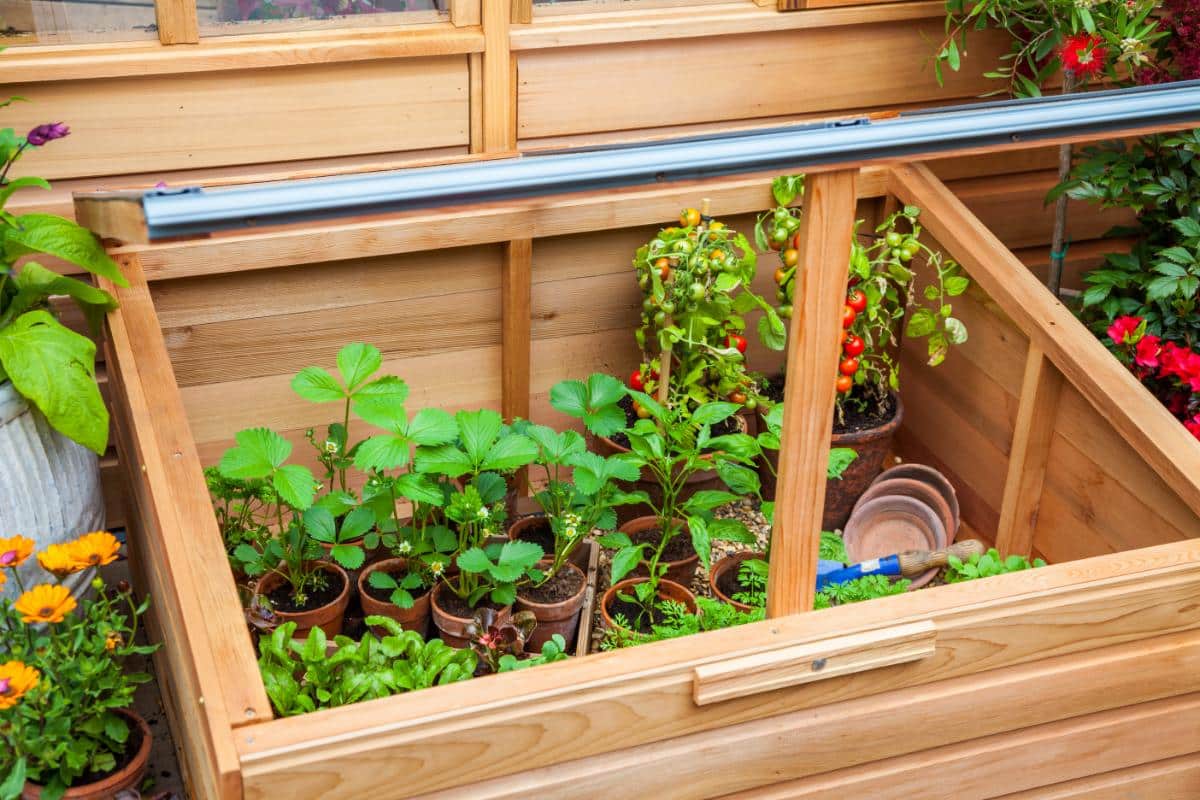
Good crop rotation is essential when you are growing strawberries! First, consider what plants have been grown in your potential strawberry path in prior years.
For example, plants like potatoes, tomatoes, peppers, and eggplants are all susceptible to verticillium wilt - the fungal disease mentioned in the last tip. If you are worried about this problem, there’s an easy step you can take in addition to planting resistant varieties.
All you need to do is choose a planting site where these crops have not been grown in the last three years. That way, you won’t have to worry about the plants falling victim to the fungal spores that were harbored there from the year before.
12. Amend Your Soil
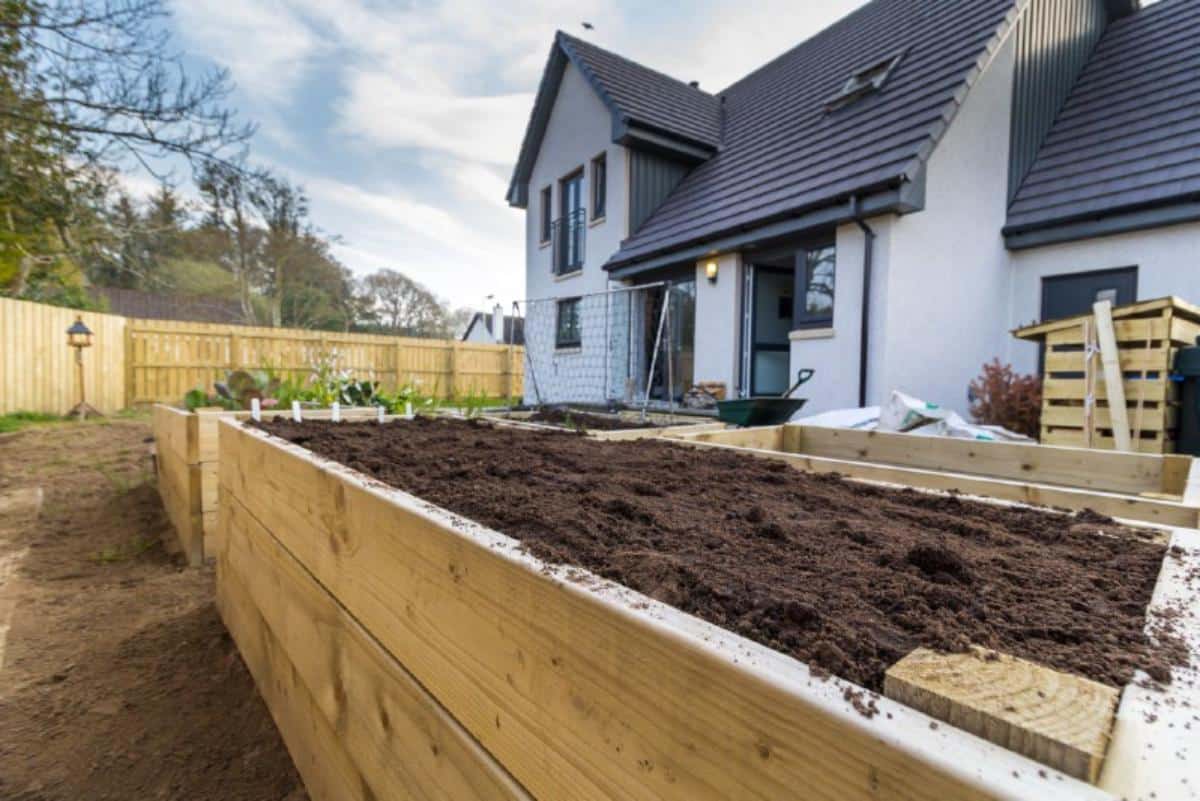
Strawberries are best grown as perennials, which means you’ll want to dedicate a lot of time to produce the best possible environment for successful long term growth. You should add ingredients like peat moss and compost to your soil before planting. This will fertilize the soil and also provide it with the appropriate texture for successful growth. Check out our perennial flowers guide and perennial vegetables to learn more about effortless perennial gardening.
13. Consider a Matted Row System
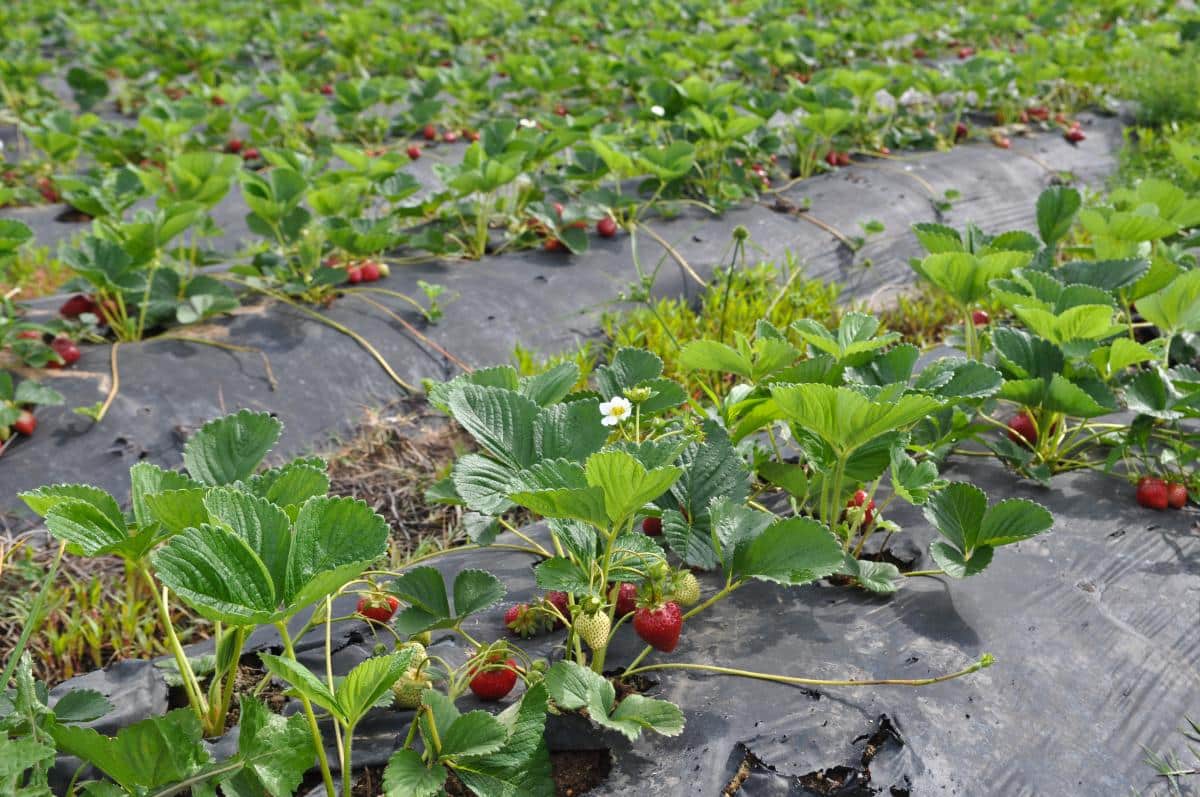
For super healthy strawberries, consider growing in a matted row system. This is often used for June-bearing varieties and works well for cultivars that produce lots of runners, too. In order to use this system, you will need to space your plants roughly 24 inches apart in rows that are four feet apart.
Let the runners spread and root at will -they’ll create matted rows about 24 inches wide. You’ll not only get a large number of strawberries, but they’ll be incredibly healthy, too.
14. Bust Up Your Soil a Year in Advance
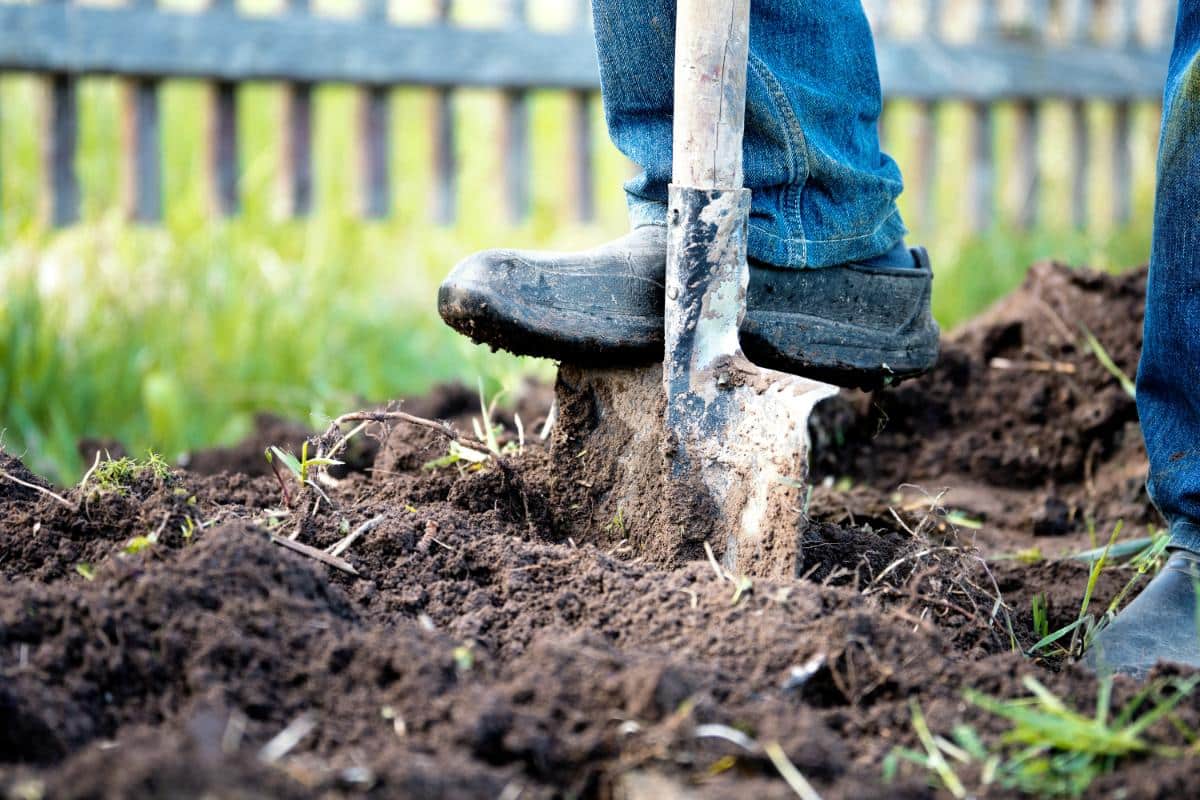
Depending on where you replant, you may have to get a jumpstart on your gardening chores the year before you plant your strawberries. If the planting location is covered in sod, cultivate and till the year before you want to plant. This will get rid of competing grasses.
You can also plant a cover crop the year before to improve soil quality. Good options include sudangrass, rye, and oats.
15. Improve Your pH
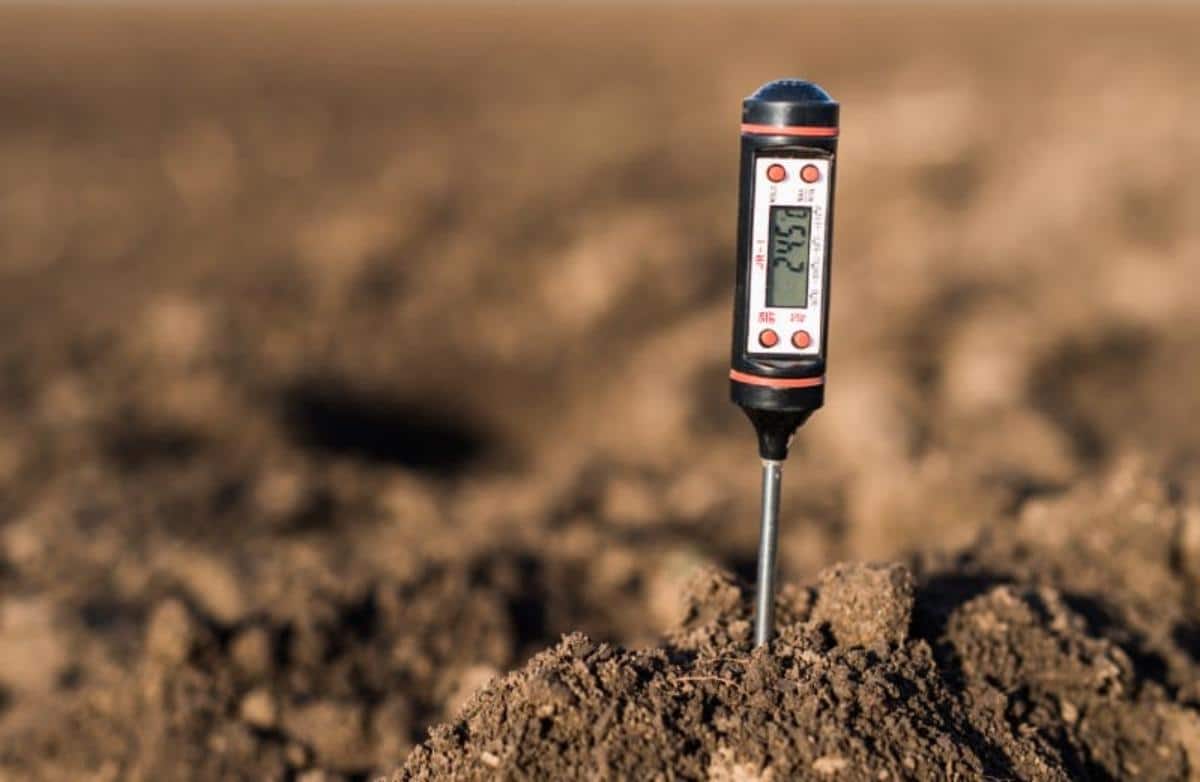
Strawberries can be grown just about anywhere, but for the healthiest plants, you will need soil that is somewhat acidic. Ideally, your pH should be between 5.8 to 6.2 (although a range between 5.0 and 7.0 is also effective). Test your soil before planting and amend with lime or manure if necessary.
16. Don’t Stress if You Can’t Plant ASAP
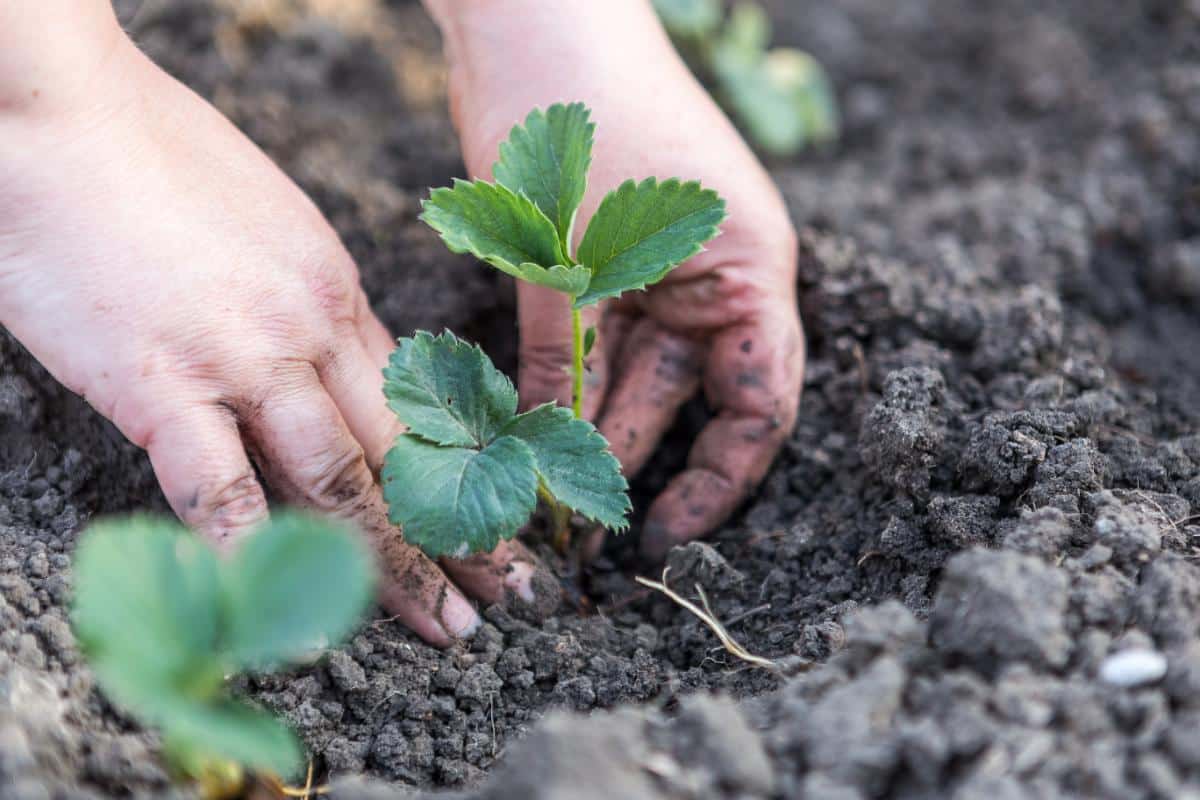
The best time to plant your strawberries is in the early spring, ideally in March or April - but don’t stress if you can’t get them in the ground that soon. Strawberries can also be planted in the summer or fall as long as you provide plenty of water. What’s more important is that you plant on a cloudy or overcast day.
17. Don’t Plant Too Shallow
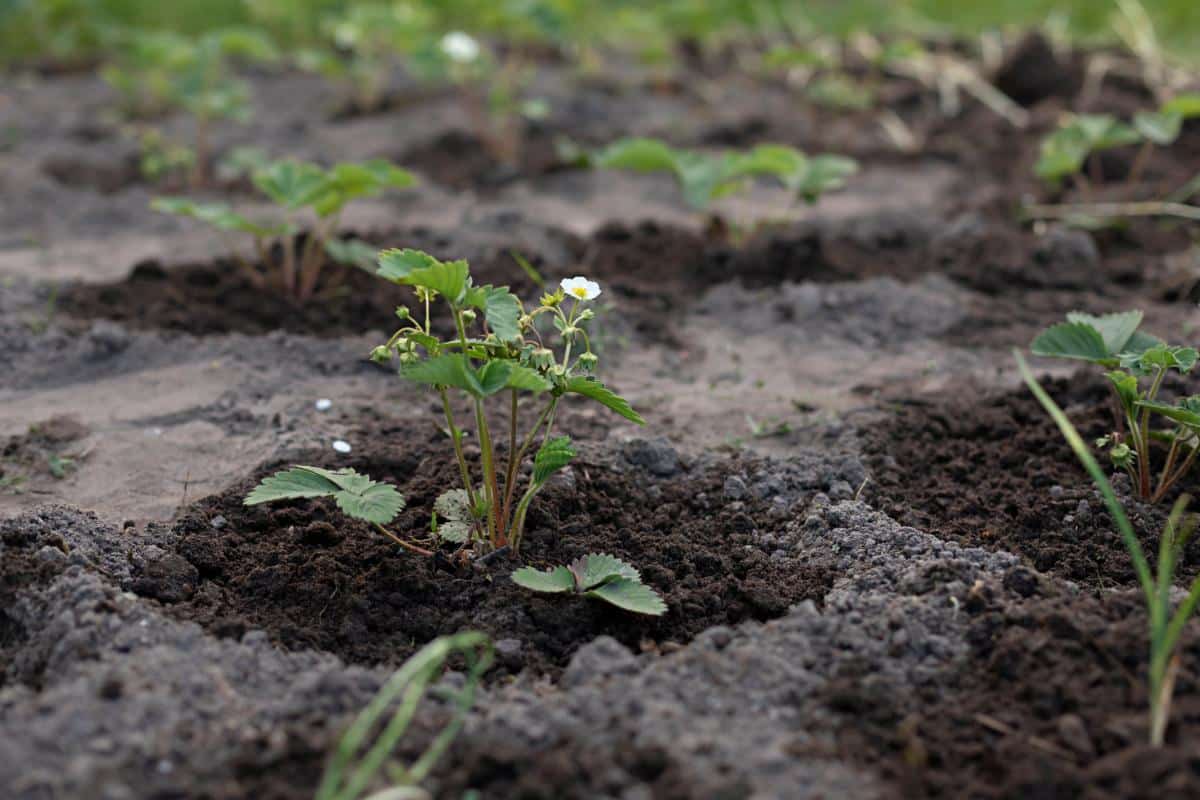
Typically, you will buy strawberry plants as crowns. There are tiny bundles of roots that are still attached to primary growing tips. You can also buy strawberry plants, but these tend to be quite expensive.
If you're buying a crown, you need to make sure you plant it just above the soil line. To do this, dig a hole that’s approximately three inches deep. Make sure it’s wide enough so that the roots can spread out in a circle. Mound the soil up in the center of the hole before backfilling and watering well.
18. Make Sure You Mulch
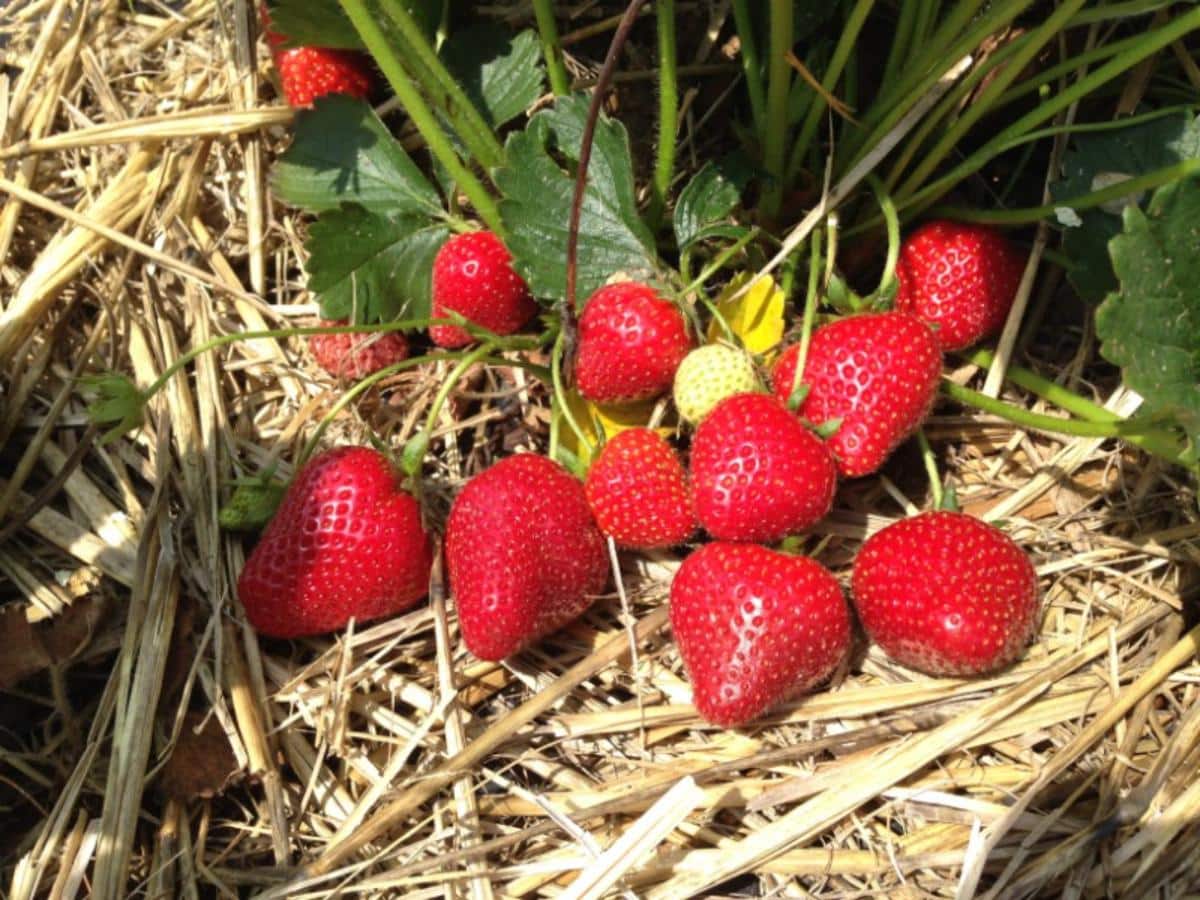
They're called strawberries for a reason! Strawberries love being grown in the mulch.
If you’re thinking about growing strawberries, grow them in the mulch. Not only will it help your plants observe water but it will also cut down on weeds. Mulch can also keep the soil around your plants cool, which is essential as summer continues to heat up. Mulch also keeps plants from touching the ground directly, where they can occasionally fall victim to various pathogens and insects.
Straw mulch isn’t your only option. You can also use shredded leaves, pine needles, grass clippings, or other kinds of mulch, too.
19. Protect Your Harvest From Hungry Birds
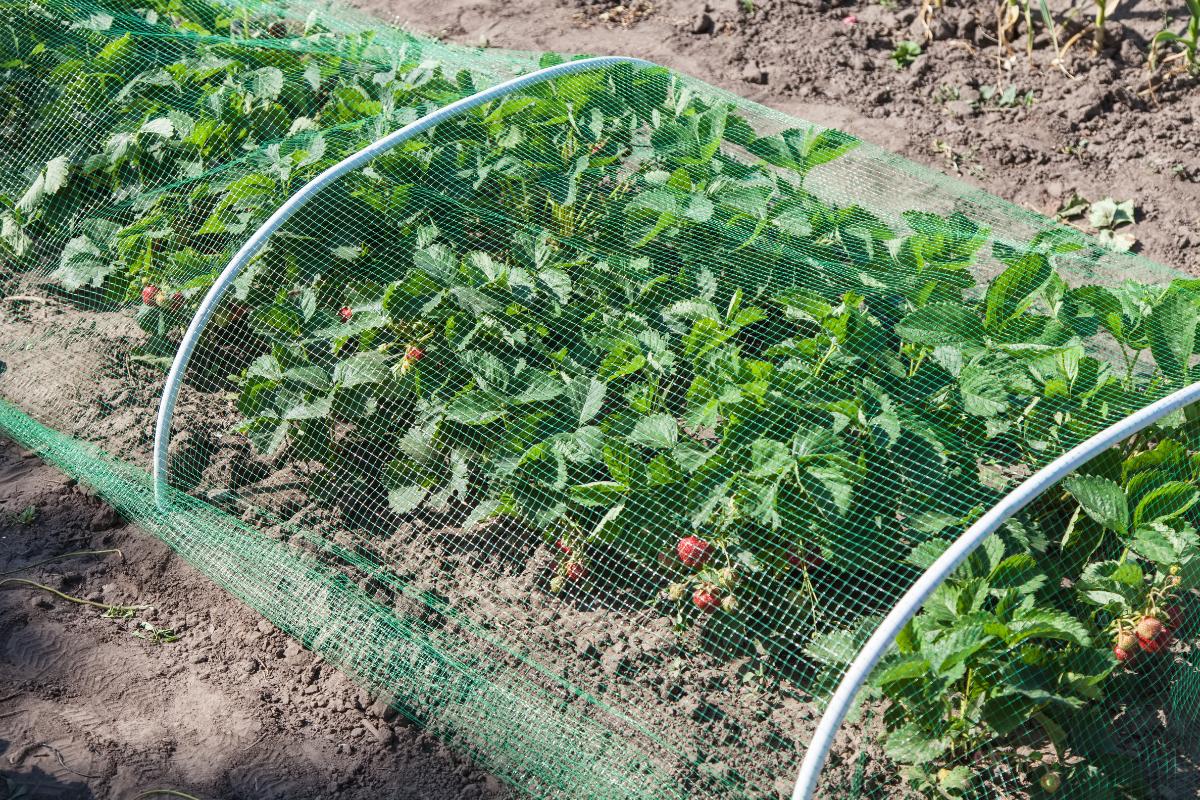
Birds love strawberries just as much as you do! To protect your berries from the birds, consider placing some protective netting or row covers on your bed of strawberries. You will want to be careful about using the covers while your plants are flowering - this can prevent pollination - but as soon as you see fruits forming, you can go ahead and put up your netting to protect the plants from opportunistic avian intruders.
20. Preserve Your Extra Strawberries
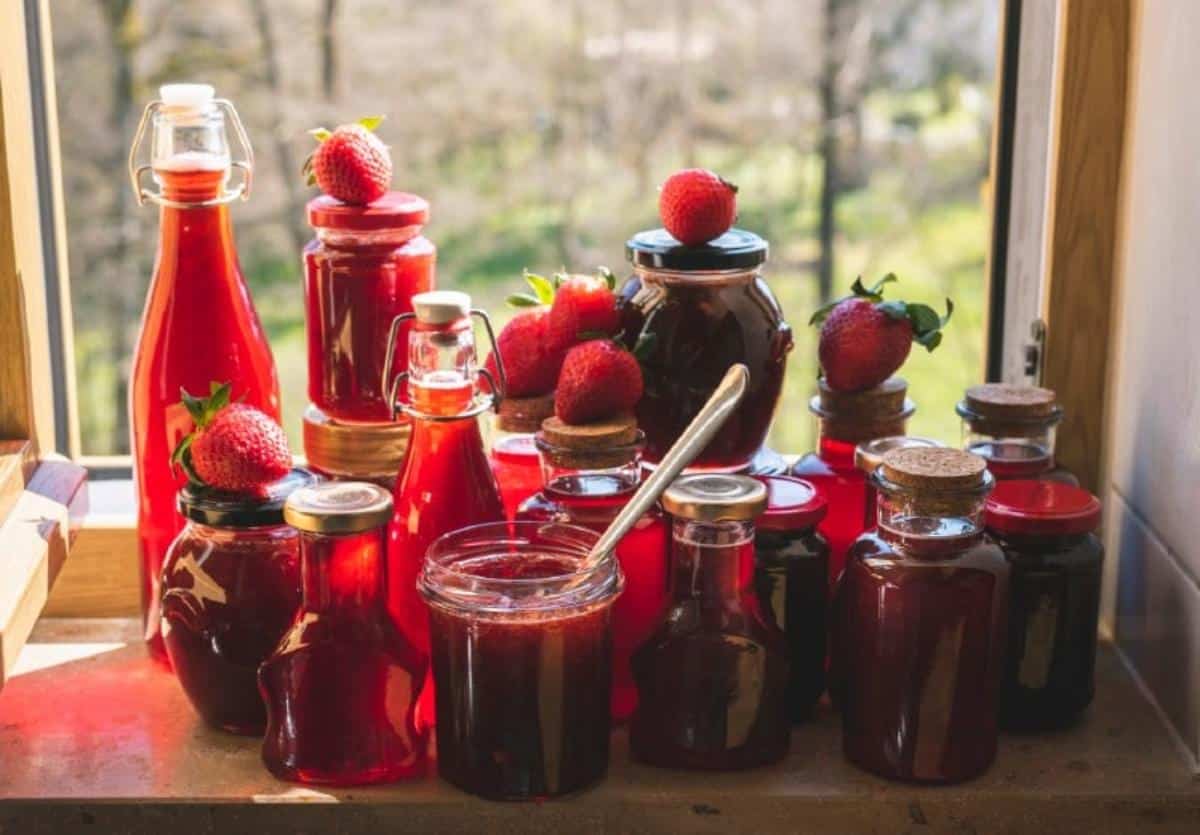
If you’re growing June-bearing varieties of strawberries, you will want to make the most of your harvest by preserving them! Strawberries can be jammed, jellied, frozen, dried, or saved in any other form. They are absolutely delicious no matter how you choose to store them!
We also have a huge strawberry recipe collection for you to get ideas from if you have a large crop this summer!
21. Grow Strawberries Multiple Years in a Row
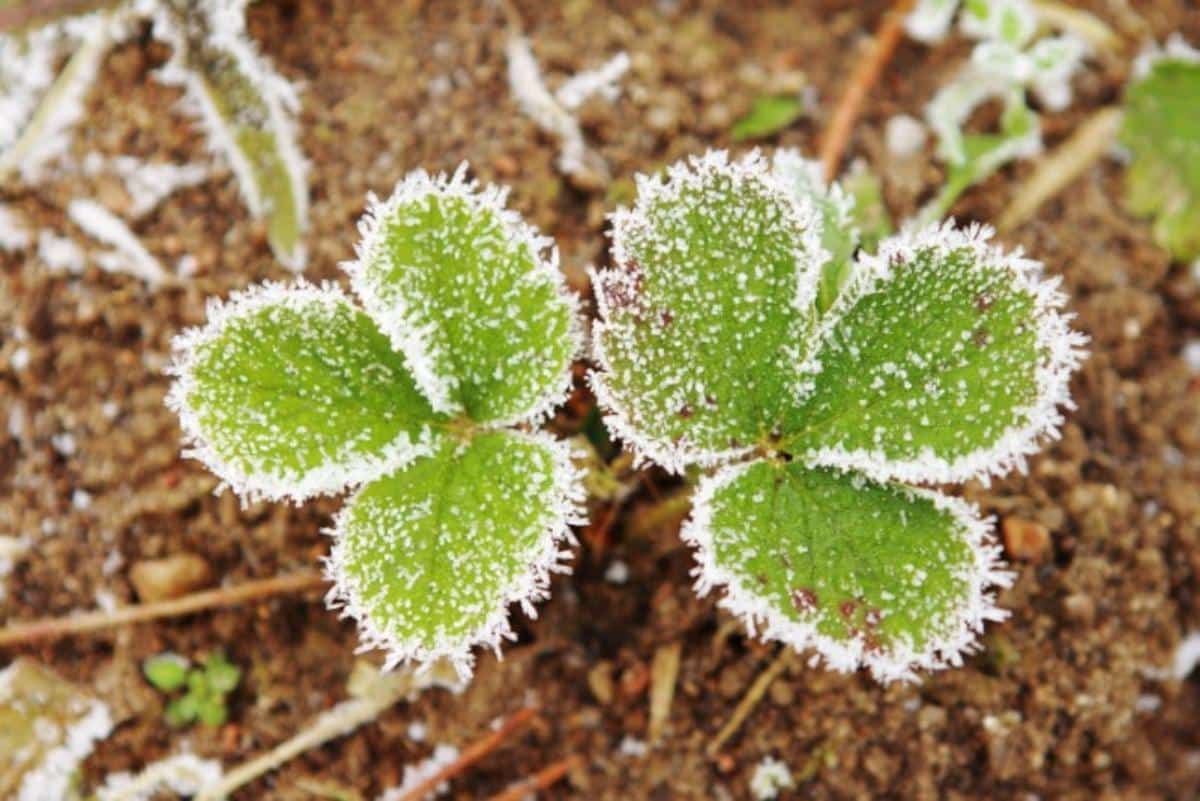
Some people grow strawberries as annuals in containers, but you’ll get more bang for your buck if you grow them as perennials. Overwintering isn’t tough - you’ll just want to provide plenty of mulch and avoid fertilization right before the last frost to keep them healthy.
22. Try Planting in Hills

Consider planting in a hill or mound system if you are growing day-neutral or everbearing strawberries. To do this, you’ll create a mound that’s about eight inches high and two feet across. You’ll put two rows of plants per hill with rows spaced four feet apart. Your yields for this system won’t be as high, but your strawberries will be larger and healthier looking than if you planted in the matted row system.
23. Watch Out for Slugs and Snails
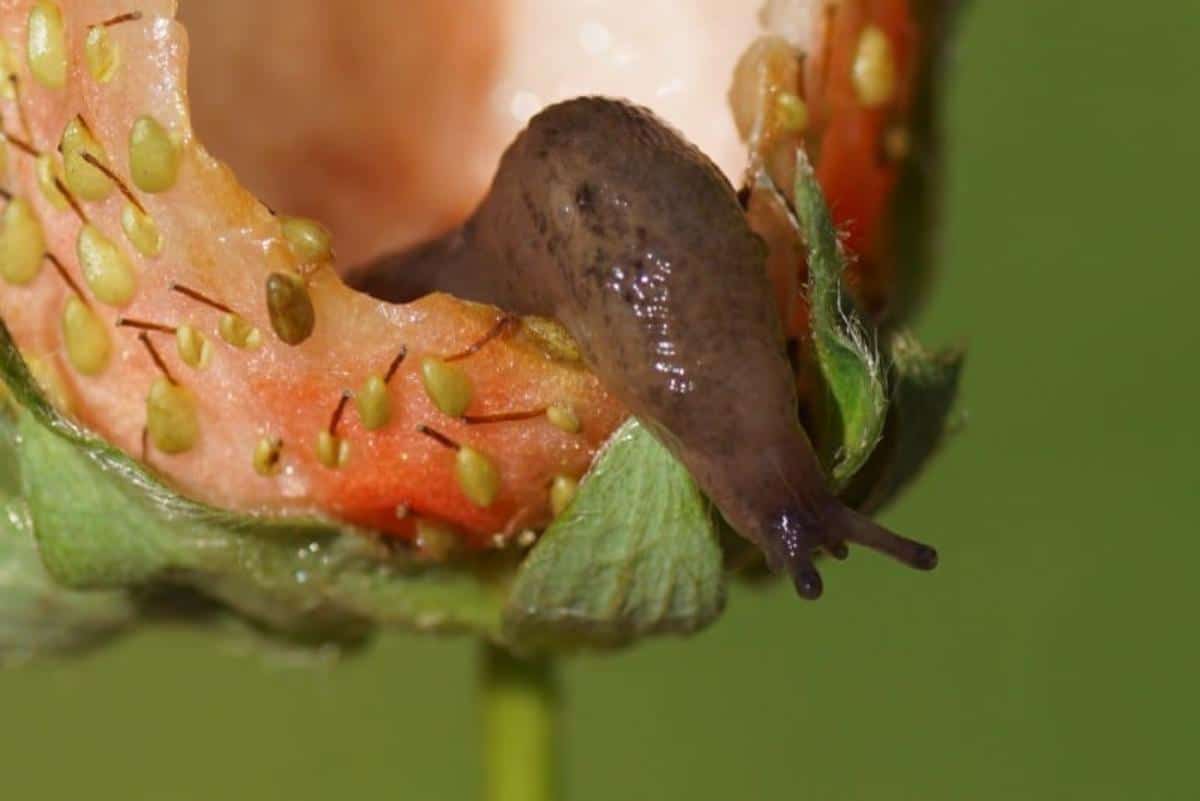
Unfortunately, you aren’t the only one who loves munching on fresh, juicy strawberries. Slugs and snails love these plants too! Keep a close eye on your plants for signs of infestation from hungry snails and slugs. Often, you can keep them away by applying a thick layer of straw mulch - the straw is too rough for their bodies, and they don’t like crawling on it.
24. Delay Your Gratification
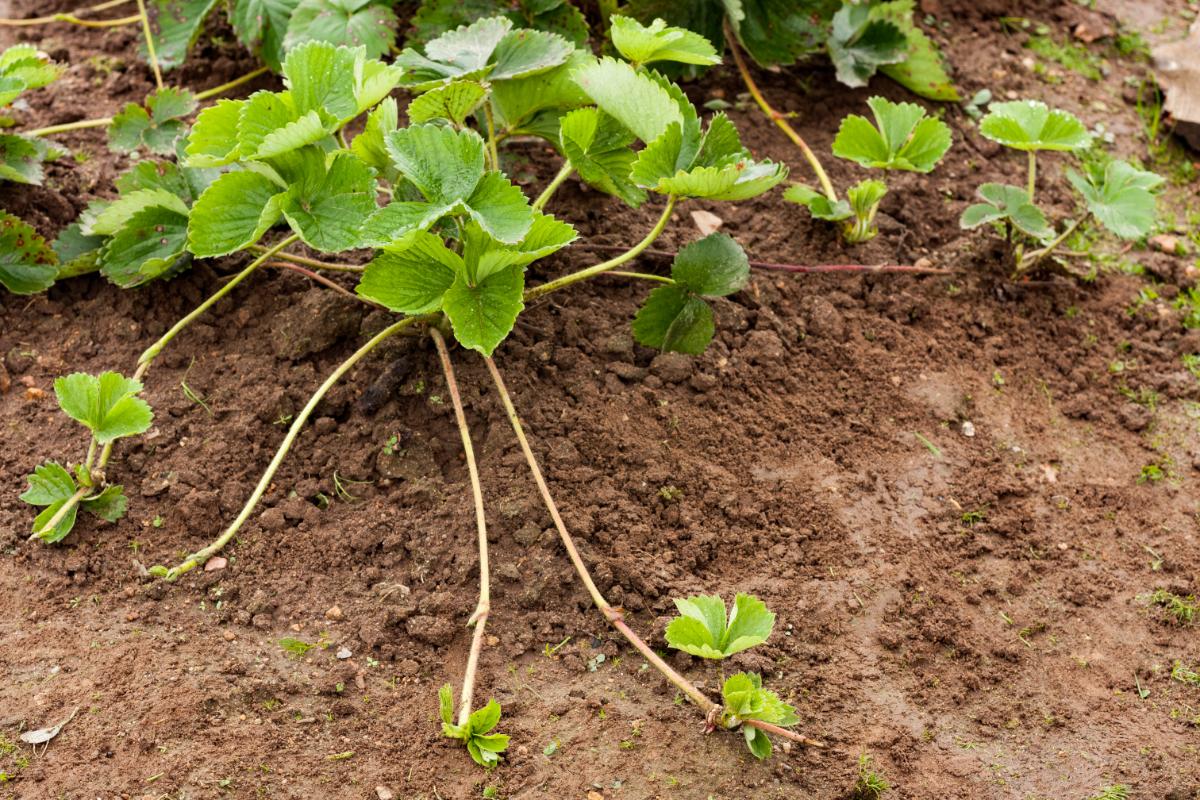
It can be tempting to want an instant harvest the year you plant. However, if you can exercise some patience, it will be well worth your efforts. If you let your plants have some time to get established by removing all the flowers that last six weeks, your plant can instead dedicate all of its energy back to building strong roots with lots of runners.
You won’t get any fruit the first year, but you’ll get a bountiful crop the second and third year you grow your berries.
25. Water Wisely
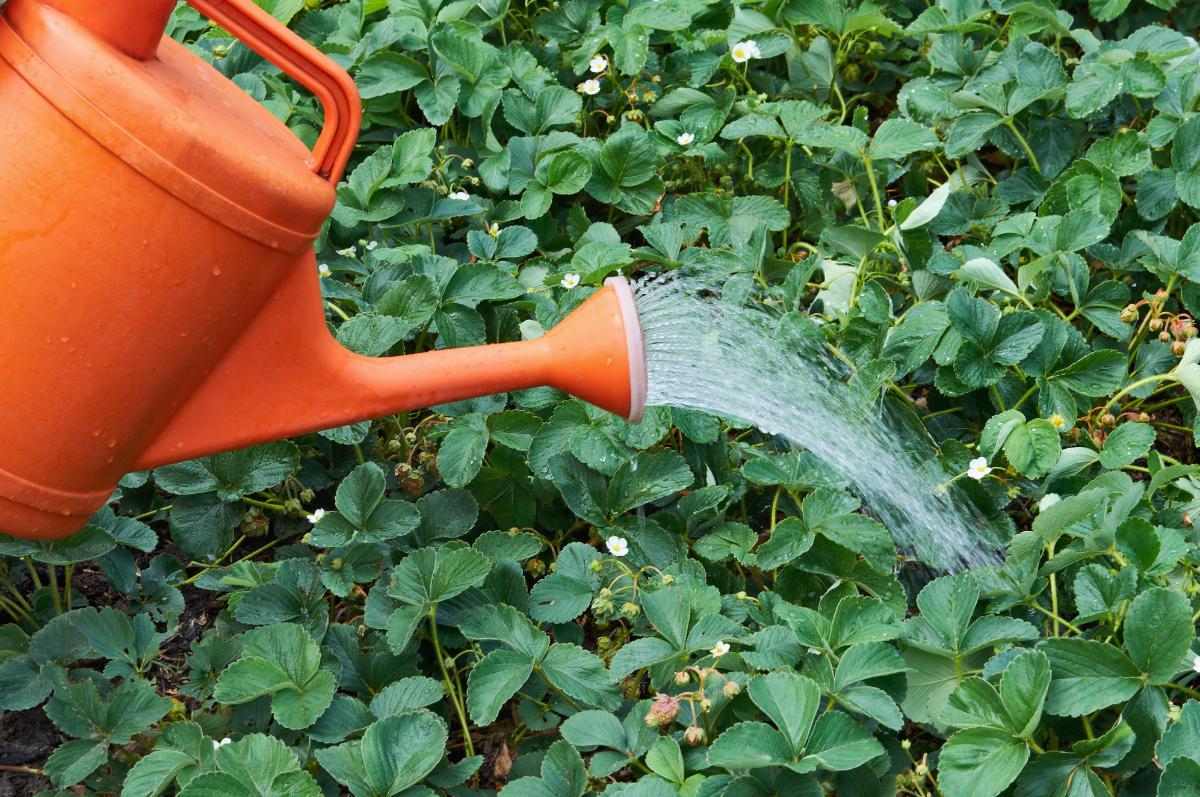
Strawberries love a consistently moist environment. Make sure you water on a regular basis! You will need to supply your plants with at least an inch of water through direct rainfall or through supplemental irrigation.
You can provide up to two inches of water while the fruit is forming, during the early bloom period until the end of harvest. You will need to continue watering during particularly dry periods in August and September.
26 Limited Space? Plant Vertically in a Plastic Drum
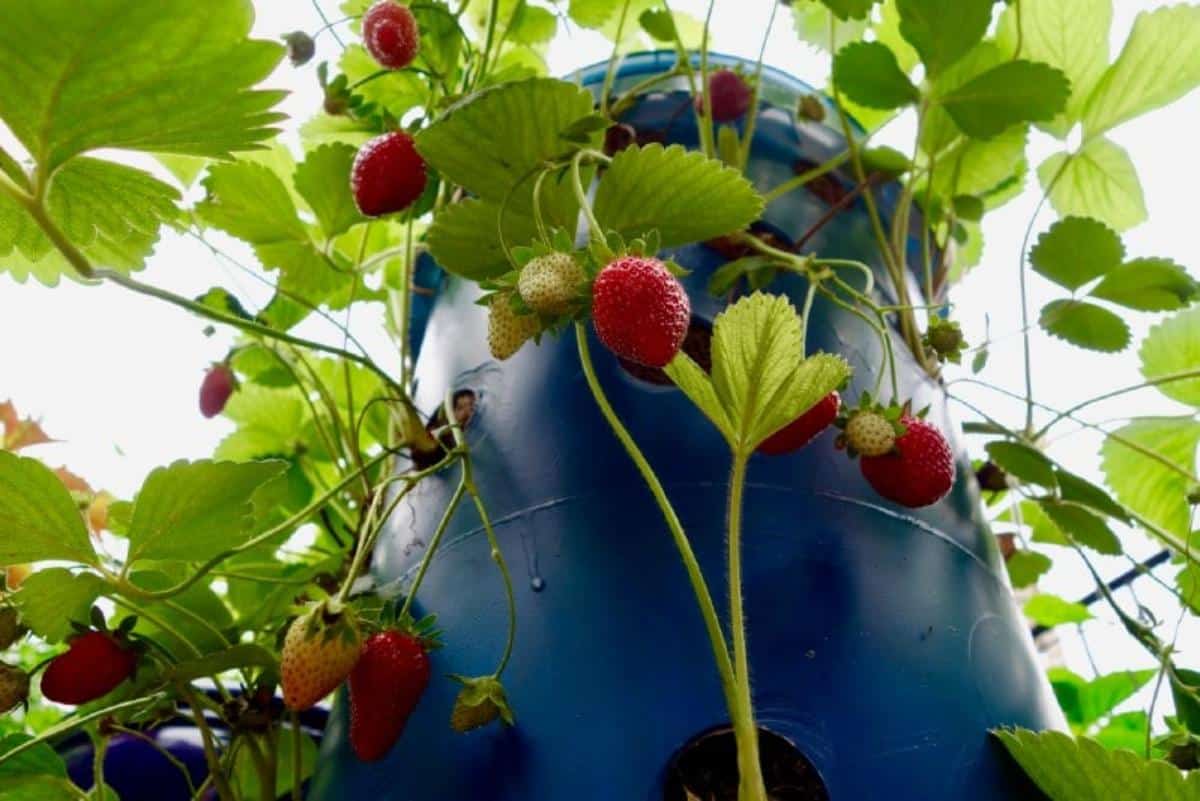
Just poke holes and plant there vertically, several of these will yield enough strawberries for you and your family. Really effective and space-saving way to plant.
27 Keep them Fresh for Longer
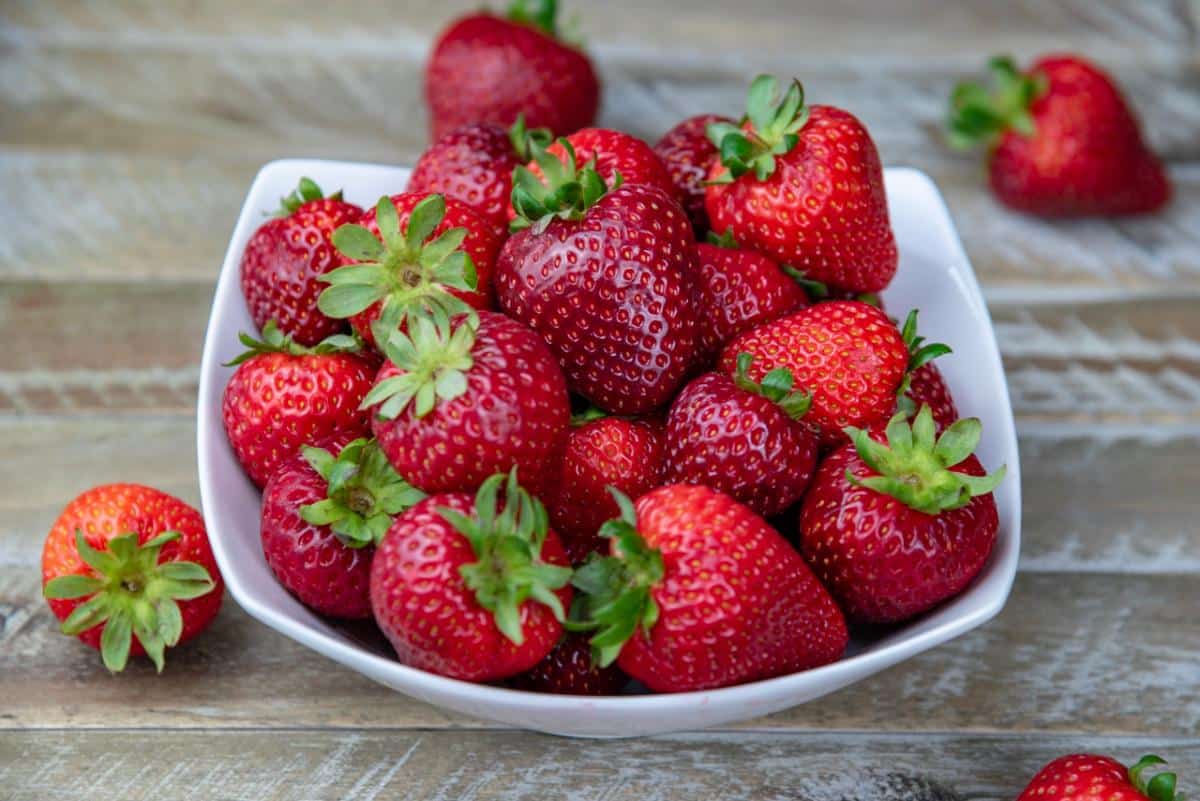
To do this just mix 1 part of white vinegar with 5 parts of water, soak your strawberries for a few minutes and let them drain on a paper towel. This trick will keep them fresh for up to two weeks.
Watering regularly will reduce threat stress on the plants and can improve fruit production the following year, too. Just remember - while lots of water is essential, it’s equally important that your plants don’t get waterlogged! Good drainage is essential to help prevent your strawberry plants from developing “wet feet.” If you want to preserve them, learn how you can freeze strawberries and enjoy them up to a year.
Growing strawberries doesn’t have to be difficult - especially when you follow these simple tips. With a little bit of work and elbow grease, you’ll be able to produce gorgeous plants so you can enjoy juicy fruits not just for months - but for many years down the road.






Bernard
Yeah, maybe i will follow these tips if I grow any 🙂
Lynne
Thanks for the great article. Plan to start a bed soon!
EmelYn
Thanks for the info i will keep that in mind
ADONTENG KWAME
is very nice I will follow thank you, please where can I get the strawberry seed
Jackie
Just planted mine today.
Ali
In the process of making a bed ATM live the info thanks
Patricia
Good information, thanks, just finished my first year with raised bed and disappointing results but lovely plants. So maybe next year should be good.
Vanessa Beaty
Its a learning phase dont give up Patricia!